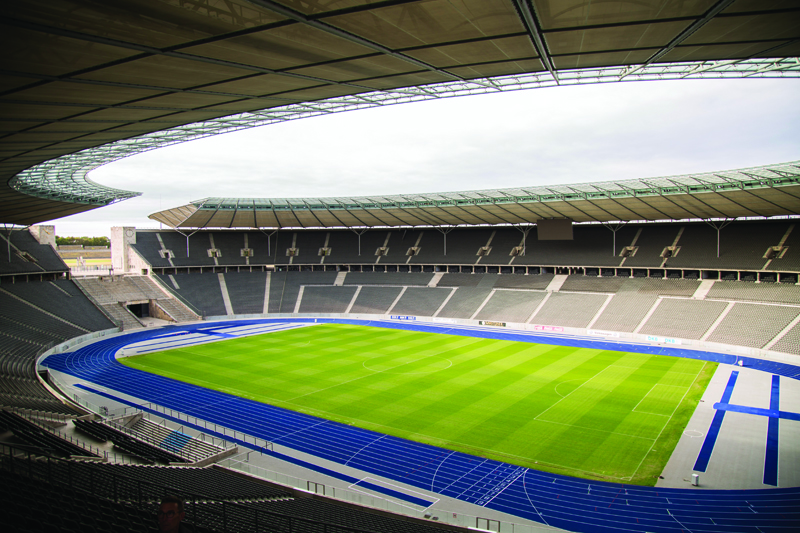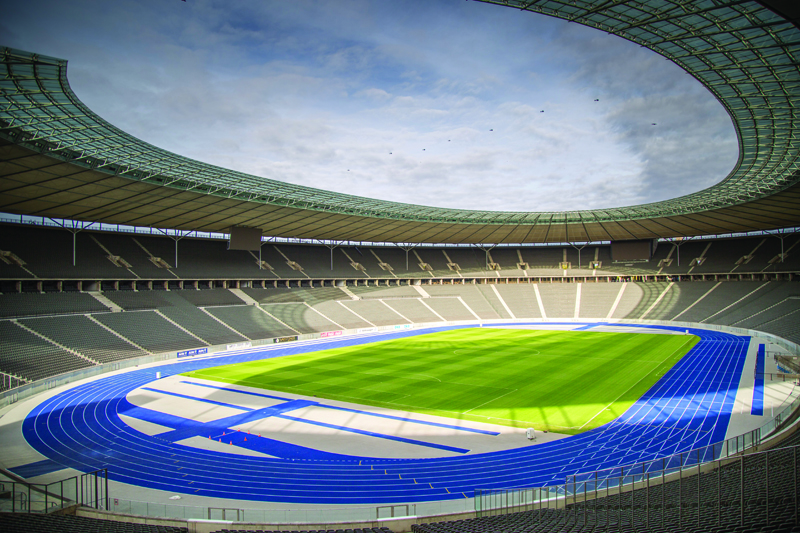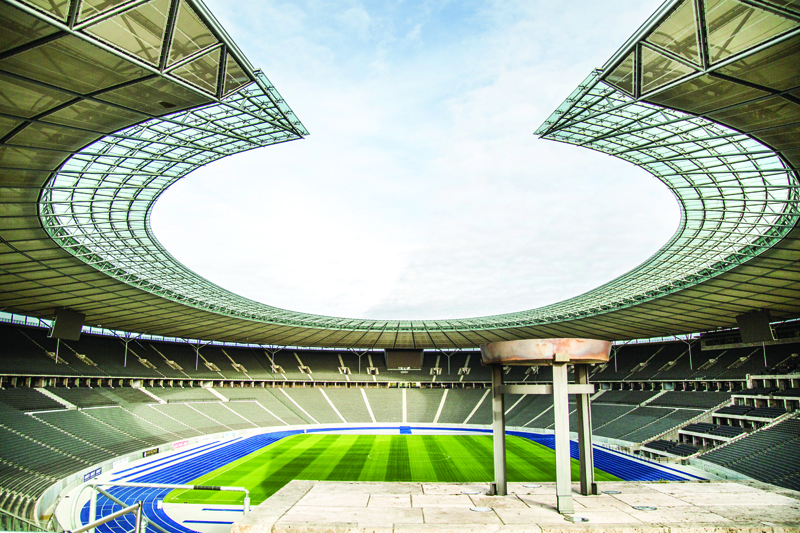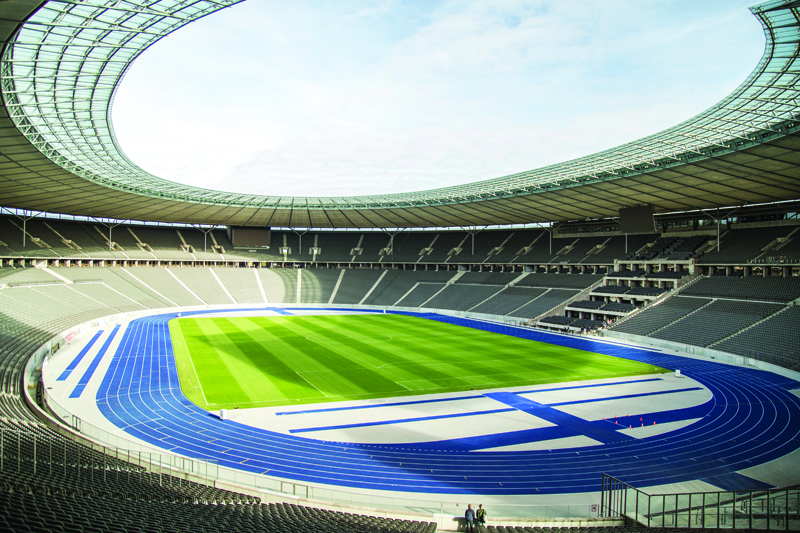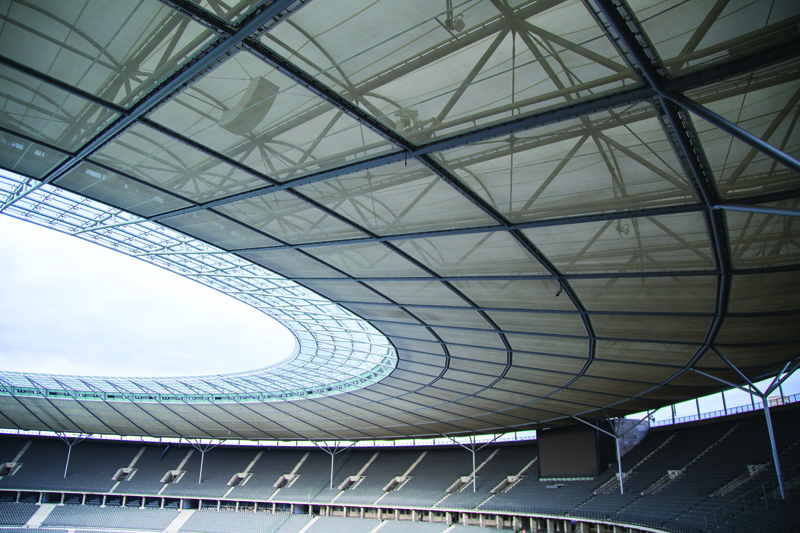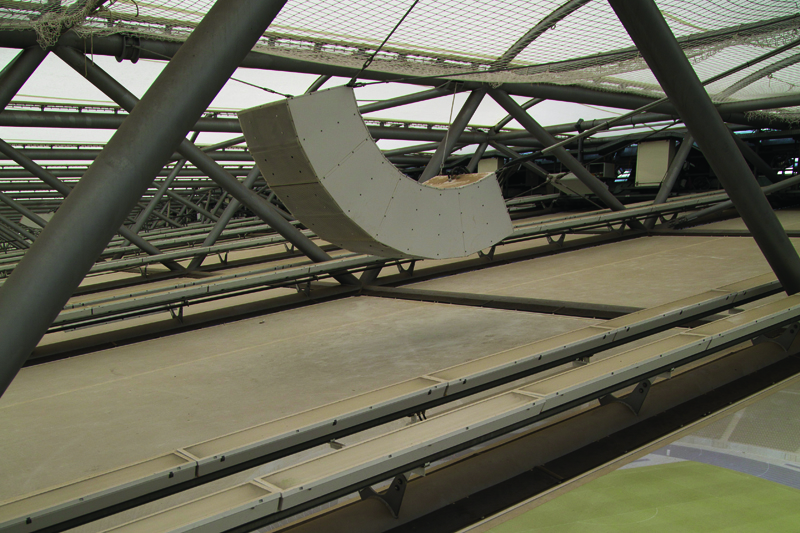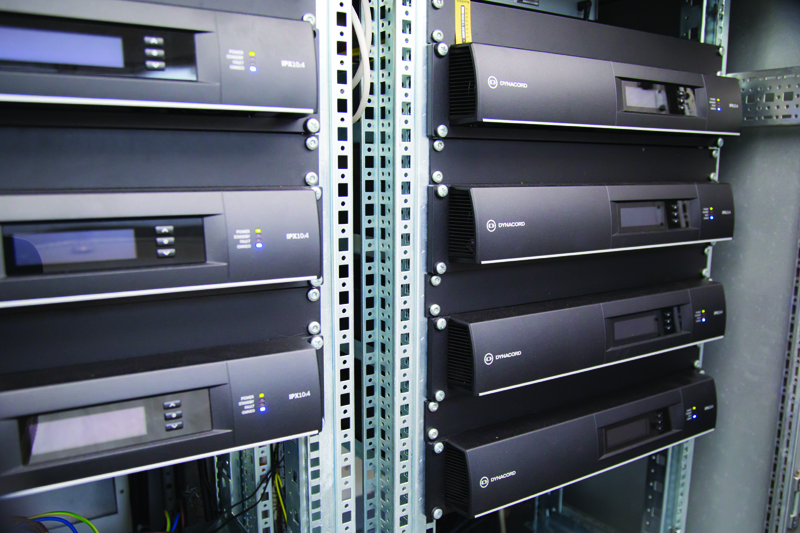This website uses cookies so that we can provide you with the best user experience possible. Cookie information is stored in your browser and performs functions such as recognising you when you return to our website and helping our team to understand which sections of the website you find most interesting and useful.
Olympiastadion
Berlin’s Olympiastadion is one of the most historic venues in the world, with its instantly recognisable design often the backdrop to some of the most memorable sporting events and concerts.
In August 2018, the European Athletics Championships were held at the venue, which made for an interesting summer, as the team at the stadium looked to significantly upgrade the audio system.
Frank Neubauer, Head of Technical at Olympiastadion, takes up the story: “The original audio system before the upgrade was from the original project back in 2004, so it had aged quite a lot in that time and was in need of a renovation.
“The project started in June, so there was around two months until the start of the European Athletics Championships – that was our deadline for completion of the new system. There was a lot of work to do in a short space of time. Plus, we had five concerts scheduled during that time, so it was vitally important that the existing audio system still worked during the upgrade for safety announcements at the events.
“The Championships were a big part of it, too – it had lots of announcements and music, so we had to make sure that the sound was perfect ahead of the event.”
Having completed the audio installation back in 2004, Electro-Voice was once again enlisted to help upgrade the sound at the stadium. Back then, the German manufacturer won the project ahead of the 2006 World Cup and opted for an extensive, new sound system, featuring a state-of-the art XLC line arrays and Precision Series amplifiers by Electro-Voice.
“The Olympic Stadium was our first, big stadium reference in Germany and it was known as the best sounding stadium in Germany at that point,” explained Fredi Palm, Application Consultant, ProSound for Electro-Voice and Dynacord. There was a clear brief from the team at the venue, which Christoph Meyer, Director of Events & Communications at Olympiastadion, explained further: “It is all about the experience when you’re in the stadium. If you can’t understand what is coming from the loudspeakers clearly, not only is it a safety risk, it’s not particularly satisfying for those fans in the venue either.”
The team wanted to invest in the latest audio technology, featuring IP and Dante. On top of that, energy-saving features had to be considered, along with lowering the total cost of ownership. Lastly, the new audio system had to comprise enough headroom for higher sound pressure levels and even better intelligibility, as well as offering the option for powerful sound reproduction for music playback.
With all this taken into consideration, the decision was made to stick with the loudspeaker design that was originally installed in 2004. Instead of completely replacing the loudspeakers, Electro-Voice’s system engineers, working closely with the application support department at the stadium, decided that the best course of action was to upgrade the existing XLC 127 loudspeakers to the more powerful high-performance DVX versions.
“The existing 171 Electro-Voice XLC 127 two-way line array elements were upgraded to the XLC127 DVX versions with high-performance DVX drivers. The previous XLC line array worked in biamp mode using passive crossover network for mid/hi, now the XLC line array is driven fully active in triamp mode,” said Fredi.
“Dynacord IPX series DSP amplifiers were the ideal choice in terms of installation flexibility, supporting Dante audio thanks to OMNEO IP-architecture and superior sound quality.
“Besides, IP technology featuring Dante leaves all options for future expansion. It also allows constant supervision and monitoring of all parameters of the entire sound system via IRIS-Net software and the customised GUI.”
The 64 IPX10:4 amplifiers used at Olympiastadion handle the signal processing in its entirety, offering the highest performance, internal analogue-to-digital conversion with ultra-low latency, and a superior signal-to-noise ratio. The three DSP blocks are split into user, array and loudspeaker processing controls, each featuring a wide range of equalisation, delay, level options and even asymmetric filters to adapt to almost any application. Complete remote control and supervision is available via the powerful IRIS-Net software, allowing system parameters, such as online, power, temperature, network status and mains power to be constantly monitored. This allows for the creation of a fully-customisable graphical user interface.
“In terms of an installation point of view, our amplifiers have more power while using significantly less rack space. They consume a lot less energy, too, due to technology called Eco Rail that’s patented by Dynacord,” added Fredi.
Elsewhere, two N8000 amplifiers are used for collection and distribution of audio signals and as an interface to the EVAC system. The stadium’s mixing console is a Soundcraft VI3000.
The new audio configuration made its debut at the European Athletics Championships, as per the plan. The whole audio system works flawlessly and has a powerful sound reproduction with even coverage and improved intelligibility. The energy consumption of the entire sound system could be reduced to even more than 50%, according to the Olympiastadion team, who were left delighted with the upgrade.
“With the new system, it is so much clearer in terms of audio coverage. For example, in the stands, you can address people directly. Before that, the sound just wasn’t clear enough – especially with the crowd noise – but now, that just isn’t a problem,” Christoph revealed.
Frank added: “Normally for the Championships, we need additional boxes for the lower tiers, however, with this system, that’s no longer needed. That really highlights the improvements that have been made. We are really, really happy.”
